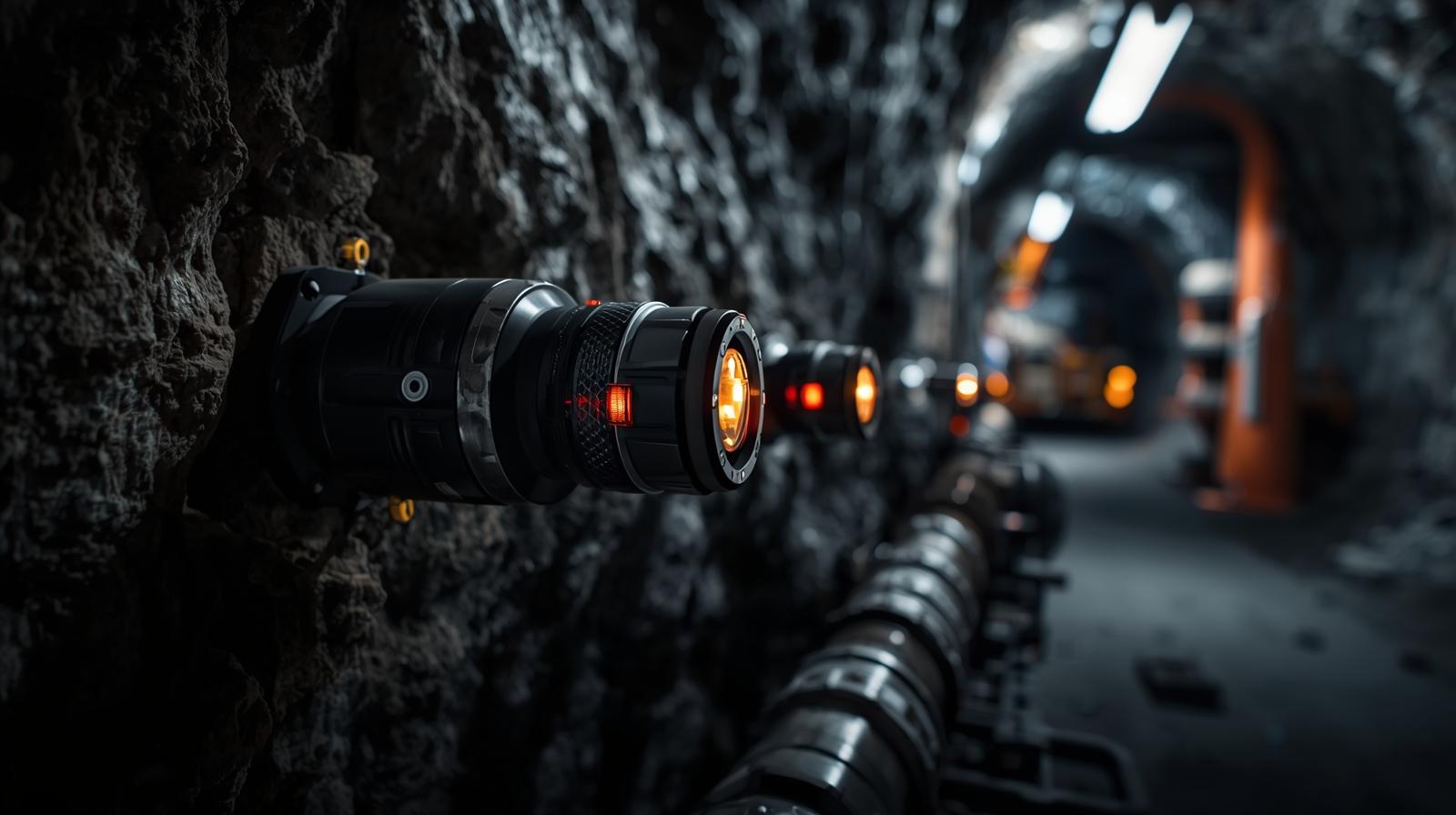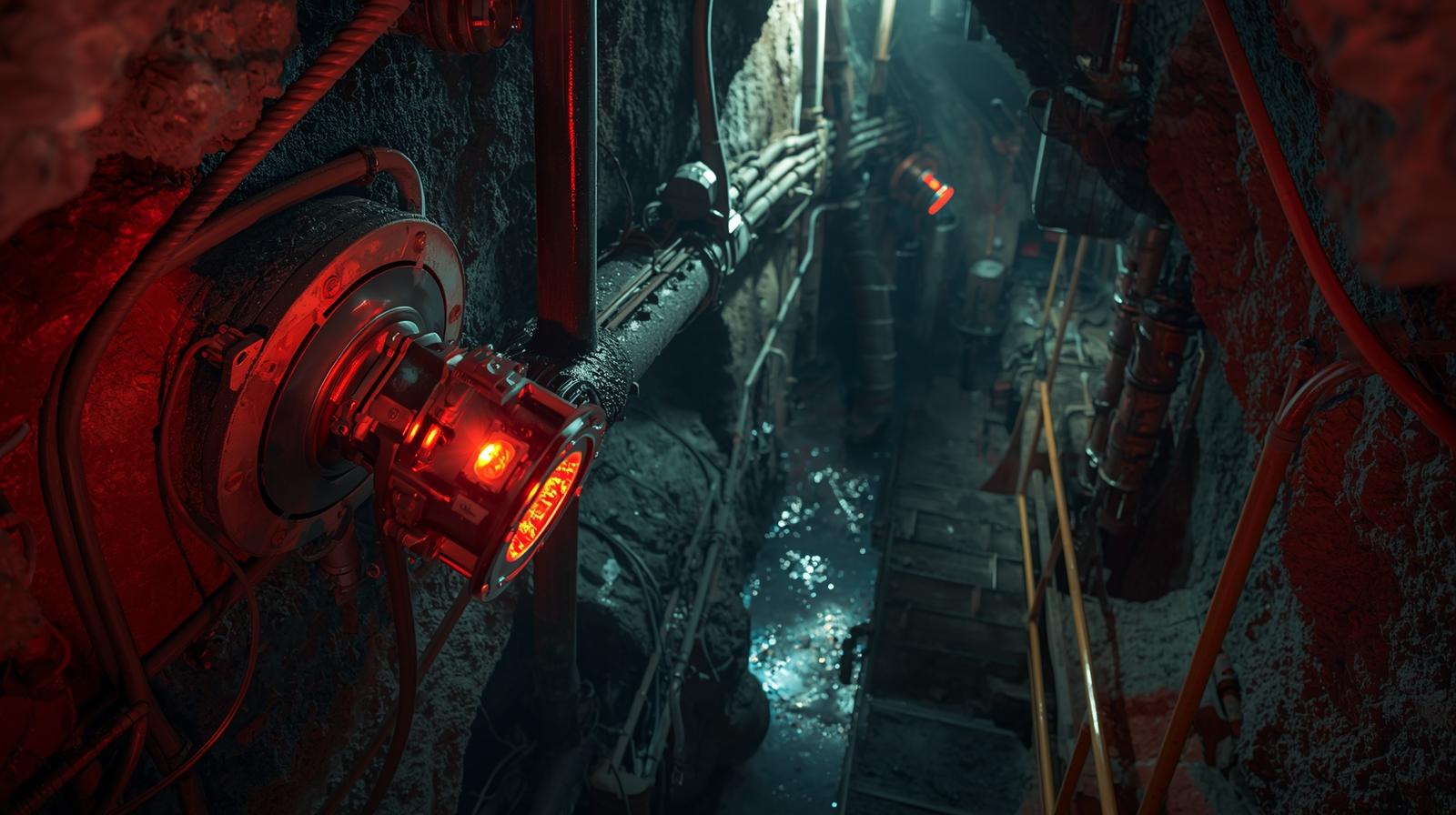Core Gas Detection Technologies Explained
The effectiveness of any gas monitoring system hinges on the underlying sensor technology. Several types of sensors are employed in the mining industry, each with specific advantages for detecting particular gases. The most common technologies include catalytic bead sensors, electrochemical sensors, infrared sensors, and semiconductor sensors. The choice of technology depends on the target gas, the required sensitivity, the operational environment, and the potential for sensor poisoning or interference. A comprehensive system often integrates multiple technologies to provide complete coverage against all atmospheric threats.
Catalytic bead sensors are a longstanding technology used primarily for detecting combustible gases like methane. They operate on the principle of combustion on a heated catalyst bead, which causes a change in electrical resistance that is measured and correlated to gas concentration. They are robust and cost effective for lower explosive limit detection. However, they require the presence of oxygen to function and can be poisoned or inhibited by certain silicone vapors or lead compounds, which necessitates careful maintenance and calibration in the mining environment.
Electrochemical sensors are the standard for detecting toxic gases such as carbon monoxide and hydrogen sulfide. These sensors operate by allowing the target gas to diffuse through a membrane and undergo a chemical reaction at an electrode, generating an electrical current proportional to the gas concentration. They are highly sensitive, specific, and require very little power, making them ideal for both fixed and portable applications. Environmental factors like temperature and humidity can affect their performance, but modern designs are increasingly stable and reliable for mining use.
Infrared sensors operate by detecting the absorption of infrared light at specific wavelengths that are characteristic of certain gas molecules. This technology is highly effective for detecting hydrocarbons like methane and carbon dioxide. They offer several advantages including immunity to sensor poisoning, ability to operate in inert atmospheres, and requiring less frequent calibration. While typically more expensive than catalytic or electrochemical sensors, their durability and reliability make them a preferred choice for critical monitoring points in the mining industry.
The Gas Sensor Market size was estimated at USD 1,621.9 million in 2024 and is predicted to increase from USD 1,827 million in 2025 to approximately USD 3,137.4 million by 2032, expanding at a CAGR of 8.6% from 2024 to 2032.
Download PDF Brochure @ https://www.marketsandmarkets.com/pdfdownloadNew.asp?id=245141093
Implementing a Comprehensive Gas Detection Strategy
Deploying gas sensors for the mining industry is a strategic exercise that goes beyond simply purchasing hardware. A holistic strategy integrates fixed systems, portable units, and area monitoring to create overlapping layers of protection. Fixed gas detectors are permanently installed in known risk areas to provide continuous monitoring. They are hardwired back to a central control room that can trigger alarms, activate ventilation systems, and even shut down equipment automatically. These systems form the backbone of a mine’s atmospheric monitoring network.
Portable gas detectors are worn by individual miners or used for manual environmental testing. These personal devices provide a vital mobile layer of protection, monitoring the immediate breathing zone of the worker as they move through the mine. They are essential for personnel entering confined spaces or areas not covered by fixed systems. Area monitors are larger, portable units that can be moved to provide temporary coverage for specific projects like development headings or during maintenance tasks. This multi faceted approach ensures no blind spots in safety coverage.
The placement and calibration of sensors are critical to system effectiveness. Sensors must be positioned according to the density of the target gas and the airflow patterns within the mine. For instance, methane sensors are placed near the roof, while heavier than air gases like hydrogen sulfide require sensors near the floor. Regular bump testing and calibration are non negotiable maintenance routines. Bump testing verifies sensor response, while calibration ensures reading accuracy. Without strict adherence to a maintenance schedule, the entire detection system becomes unreliable.
Integration with Mine Safety and Automation Systems
Modern gas sensors for the mining industry are increasingly intelligent and connected. They are no longer standalone alarms but integral components of a broader Mine Safety and Automation System. These sensors feed real time data into a centralized network, allowing for data logging, trend analysis, and remote monitoring from the surface. Supervisors can visualize the entire mine’s atmospheric conditions on a digital map, watching for developing hazards and making informed decisions to protect personnel and optimize ventilation flow.
This integration enables automated responses that are faster than human reaction times. For example, if methane levels at a longwall face begin to rise, the system can automatically increase ventilation fan speed to dilute the gas. If concentrations continue to climb to a preset threshold, the system can automatically power down electrical equipment in the affected section, eliminating a potential ignition source. This level of automation creates a proactive safety environment, preventing incidents before they can escalate into emergencies, thereby enhancing overall operational resilience.
Regulatory Compliance and Best Practices
The use of gas sensors for the mining industry is heavily governed by strict health and safety regulations established by bodies like the Mine Safety and Health Administration. These regulations mandate the type of monitoring required, permissible exposure limits for various gases, calibration frequencies, and record keeping practices. Compliance is not optional. It is a legal requirement that mining companies must fulfill to maintain their operating licenses. A robust gas detection program is the primary mechanism for demonstrating this compliance and ensuring a culture of safety.
Adhering to best practices goes beyond mere regulatory compliance. It involves creating a comprehensive gas detection plan that includes selecting the right technology, strategic placement, regular maintenance, and thorough training for all personnel. Every miner must understand what the alarms mean and how to respond appropriately. Regular drills and ongoing education are essential. Furthermore, maintaining detailed records of all calibrations, alarms, and exposures provides valuable data for auditing safety performance and continuously improving the system over time.

The Future of Gas Detection in Mining
The future of gas sensing technology is incredibly promising, driven by innovation aimed at enhancing safety and efficiency. We are moving towards the development of more selective, sensitive, and durable sensors that require minimal maintenance. The integration of the Internet of Things is leading to the next generation of wireless, smart sensor networks. These systems can communicate with each other, self diagnose issues, and provide even richer data for predictive analytics, allowing mines to anticipate problems rather than just react to them.
Another exciting frontier is the use of drone mounted and autonomous robotic gas sensors. These platforms can be deployed into areas that are too dangerous or inaccessible for human workers, such as after a collapse or in abandoned sections of a mine. They can provide critical atmospheric data for rescue operations or routine inspections without putting anyone at risk. As mining continues to push into deeper and more remote deposits, these advanced technologies will become indispensable tools for managing gas hazards and protecting the workforce.
Conclusion
Gas sensors for the mining industry represent a perfect synergy of technology and safety. They are fundamental instruments that protect the most valuable asset in any mining operation its people. From simple early warning devices, they have evolved into sophisticated, interconnected systems that form the nervous system of a modern mine’s safety apparatus. By continuously monitoring for invisible threats, enabling automated responses, and ensuring regulatory compliance, these sensors create a foundation of safety upon which all mining activities depend. Their continued development and diligent application are essential for the future of this critical global industry.
Explore In-Depth Semiconductor & Electronics Market Research:
https://www.marketsandmarkets.com/semiconductorand-electonics-market-research-87.html
Frequently Asked Questions (FAQs)
What are the most common gases detected in mines?
The most common hazardous gases include methane for its explosiveness, carbon monoxide for its toxicity from engine exhaust, hydrogen sulfide for its acute toxicity, and oxygen levels to monitor for deficiency.
How often do gas sensors need to be calibrated?
Calibration frequency is often dictated by regulations and manufacturer guidelines, typically ranging from every 30 to 90 days. Regular bump testing before each use is also a critical best practice for portable units.
What is the difference between fixed and portable gas detectors?
Fixed gas detectors are permanently installed in specific locations for continuous area monitoring. Portable detectors are worn by personnel to monitor their immediate breathing zone as they move throughout the mine.
Can gas sensors prevent all mining accidents?
While they cannot prevent accidents caused by structural failures or other mechanical issues, gas sensors are extremely effective at preventing accidents caused by atmospheric hazards, which are a significant cause of mining disasters.
What should a miner do when a gas alarm sounds?
Protocols may vary, but generally, miners must immediately stop work, don self contained breathing apparatus if required, and evacuate to a designated safe area following pre established escape routes, while reporting the alarm to supervision.
See The Latest Semiconductor Reports:
Solid State Relay Market Size, Share & Trends : https://www.marketsandmarkets.com/Market-Reports/solid-state-relay-market-260413598.html
Battery Technology Market Size, Share & Trends : https://www.marketsandmarkets.com/Market-Reports/battery-technology-market-253343109.html
Radiation Hardened Electronics Market Size, Share & Trends : https://www.marketsandmarkets.com/Market-Reports/radiation-hardened-electronics-market-44047967.html
Smart Appliances Market Size, Share & Trends : https://www.marketsandmarkets.com/Market-Reports/smart-appliances-market-8228252.html
Quantum Computing Market Size, Share & Trends : https://www.marketsandmarkets.com/Market-Reports/quantum-computing-market-144888301.html
Cold Chain Monitoring Market Size, Share & Trends : https://www.marketsandmarkets.com/Market-Reports/cold-chain-monitoring-market-161738480.html


